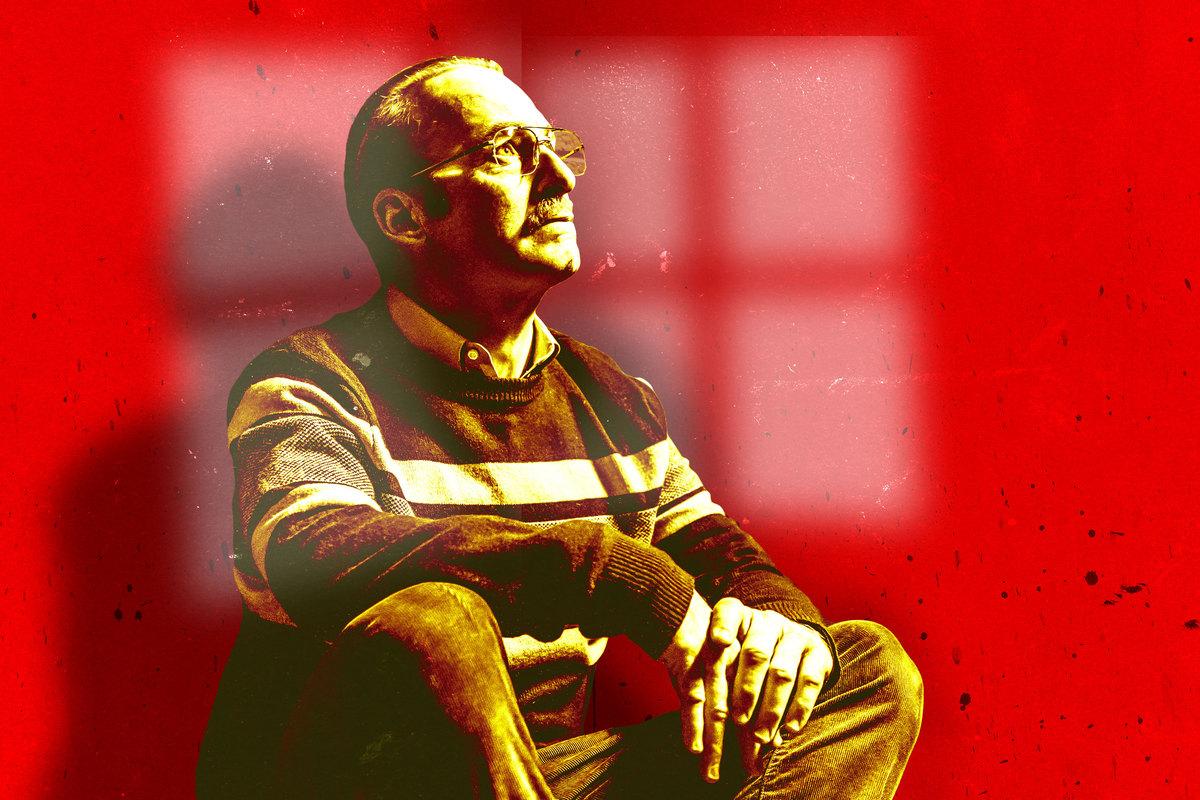No Show Earned Its Ending More Than ‘Better Call Saul’
Final seasons of celebrated TV dramas are often sources of anxiety, but there was never any doubt about the final bow of ‘Better Call Saul’
On a recent episode of the Better Call Saul Insider Podcast, Breaking Bad creator and Saul cocreator Vince Gilligan reminisced about the best meal he’d ever eaten during production. In the midst of directing “Carrot and Stick,” the second episode of Season 6, Gilligan had a heavenly surf-and-turf dish in his trailer. “I can remember it like it was yesterday,” he said with the air of a man recounting a transformative religious experience. “It was a steak so good that Ruth’s Chris could sell it for like $80. My eyes were rolling up in my head eating this thing.” That wasn’t all; the steak came with “a piece of swordfish that was among the best pieces of fish I’ve ever eaten in my life,” seasoned with a little lemon and “the best tartar sauce.” So moved by the food was Gilligan that he delayed his return to set to pay his compliments to the chef. “Every bite was both a revelation and a sadness, that I was coming that much closer to the end of the meal,” he recalled.
It’s completely in character—as Better Call Saul’s star-crossed leading lawyers and cartel killers always were—that Saul had “spectacular” catering. The level of care and craftsmanship on display in every line and shot of the show—the attention to detail apparent in the writing, cinematography, and performances from the leads on down to the smallest supporting parts—is, if not unmatched, certainly unsurpassed in small-screen history. Small wonder, then, that the grub would be good too. Relishing the last morsels of Saul, whose final course concluded not only the six-season series but also—for the foreseeable future—the overarching, 11-seasons-and-a-movie Albuquerque tale told through Breaking Bad, El Camino, and Saul, was a lot like savoring that steak and swordfish. The portions were perfectly filling, but it’s still hard not to wish that they could have been bigger.
Even when the final season of Saul was sad—whether because of its characters’ travails or in the more meta sense of bidding goodbye to a beloved show—it was never inconsistent or sloppy. Just as Gilligan probably wasn’t worried about choking on hidden bones, finding an ant in his food, or catching a bug from an unclean kitchen, viewers of Saul never had to fret about the prequel to Breaking Bad being undercooked or poorly prepared. In that sense, the series was nearly unique.
Final seasons of celebrated TV dramas are often sources of anxiety. Viewers who’ve invested their time and emotions in long-running shows—and who’ve been burned before by deflating denouements—wonder whether loose ends will be tied up, characters will be cared for, and landings will be stuck. Not so with Saul, which was well-considered and well-executed to the very end, as was Breaking Bad before it. Just like Breaking Bad’s series finale, “Felina,” “Saul Gone” is sitting on a near-perfect IMDb user rating, surpassed by only one episode from earlier in the last season. Gilligan and Peter Gould (a Breaking Bad veteran who cocreated Saul) engineered one of the best TV endings of all time in 2013, and then, for their next trick, they repeated the feat nine years later.
As Joanna Robinson and I discussed on the first of our Season 6 podcasts, to follow the final phase of Saul’s story was to be pulled between conflicting feelings. On the one hand, the endgame felt fraught: Some characters we cared about were bound to behave irredeemably, lose their lives, or both. (At times, it wasn’t clear which fate would be worse.) From episode to episode and scene to scene, the series induced deep anxiety. On a more macro level, though, we had few fears: The expertise and track records of Gilligan, Gould, and the writers, directors, and actors in their orbit were such that we were comfortable placing ourselves in their custody as artists and storytellers. In that sense, Saul was as soothing as an evening in Mrs. Nguyen’s nail salon, ensconced in a massage chair with a foot bath and a cool cup of cucumber water. We could sit back, relax, and enjoy the flight without worrying about whether the landing would be bumpy.
Gilligan and Gould landed on a different runway this time, one with no Nazis, machine guns, or avenging antiheroes. Like the rest of the series, the last act was more muted than Breaking Bad’s, though no less fulfilling. Saul’s final episode ended with its protagonist not unrepentantly bleeding out in a meth lab, but willingly paying a steep price for his sins in prison; with his id-embracing alter ego not allowed to take over, but laboriously renounced and retired; and with the love of his life not turned against him, but back in his corner (albeit not back in his bed). In contrast to most of the difficult men who populated TV during the era that gave rise to Saul, Walter White’s erstwhile lawyer neither escaped consequences nor met a violent-but-rapid demise. He’ll have a long time to regret what he did, but he’ll spend the decades he has left reducing his karmic debt instead of doubling down.
In permitting its leading duo to disavow their worst impulses and belatedly but sincerely save their souls—if not their freedom or finances—Saul supplied a happy ending, or what passes for one in Gilligan and Gould’s unforgiving, unforgetting fictional landscape. In the process, the prequel-turned-sequel left no significant story lines unserved and no major questions unanswered, save for the thematic and moral ones it wanted its viewers to keep pondering after the credits rolled.
As was the case with its predecessor, Saul’s satisfying ending might produce the impression that the outcome was planned from the start. Gilliganverse veterans know better: Part of the legend of both Breaking Bad and Better Call Saul is that their creators fumbled forward rather than proceeding along a predetermined path. Just as Jesse Pinkman and Saul himself were supposed to be bit players on Breaking Bad, Kim Wexler wasn’t created as a colead, and Jimmy McGill was supposed to turn into Saul by the end of Season 1 instead of in the series’ fifth-to-last episode. What matters most isn’t whether a creator can see several seasons ahead; while it’s nice to know what’s coming, the capacity to course-correct—to flip the script to capitalize on the potential of an Aaron Paul or a Rhea Seehorn—is not a bug but a feature of TV. And by making each moment the best it could be, Gould and Gilligan gave themselves options: Memorably lighting an otherwise drab garage in an intimate, noirish way in the pilot set up an emotional payoff in the series finale that the creators couldn’t have anticipated in 2015.
Gilligan and Gould deserve credit for making their audibles look like planned plays, but their oft-cited talent for escaping tight spots obscures another great trait: their penchant for avoiding unforced errors. The kind of corners they wrote themselves into aren’t the kind that kill you—not as long as each successive step is consistent with what went before, particularly where characters are concerned. With enough time and bright minds in the writers’ room, you can write yourself out of a laptop locked in an evidence room, but there’s no coming back from a mishandled character who’s lost the audience’s understanding, sympathy, and interest. This series never started down the proverbial bad choice road that might have led to disaster, because it respected its protagonists too much to treat them cavalierly or fail to fully think through what they wanted and the way they would act. The creators of Better Call Saul may not have always known where it was going, but they always knew what it was.
Secure in that knowledge, and pointed toward narrative true north, Saul allowed itself the luxury of moving slowly. Both behind the scenes and on the screen, the series took its time to deliver the not-so-speedy justice that Gilligan yearns to see balance the scales. Not every episode was an all-timer, and not every choice completely paid off; sometimes—especially in Season 2—the plotting and pacing were deliberate even by Saul’s standards, testing the most patient spectators’ tolerance for delayed gratification and weakening Saul’s claim to “appointment TV” status.
Yet if Saul occasionally dawdled, it never lost its way or stopped providing pleasures. Throughout its run, the series seemingly maintained its exacting quality without a whiff of scandal or complaint about toxicity, production problems, or difficult working conditions. Publicly, at least, the cast and crew who worked inside the Saul ecosystem universally seemed to sing its praises, from little-known names to legends like Carol Burnett. Maybe they appreciated that Saul gave its scenes and seasons extra oxygen, even—or especially—when the audience was holding its breath.
Not only did the series escape the prequel curse, establishing itself as probably the best example of the form, but by the end it became the fully functional time machine that Jimmy/Saul envisioned in “Saul Gone,” capable of situating itself before, during, and after Breaking Bad in the span of a single episode. Bob Odenkirk’s character, who tried out many names before finally landing on James, became the Gilliganverse’s alpha and omega, a figure who entered the timeline well before Walter White and long outlived Heisenberg. That’s quite a come-up for a figure who started his fictional life as a crass, corrupt caricature, a shallow supporting player present mostly as a means to Walt’s end. Comic relief became complex lead; sketch comic became revered dramatic actor.
In another upset, Saul ran one episode longer than Breaking Bad. The former may have disappointed some of the many millions who tuned in to chase the latter’s adrenaline-induced highs, and it didn’t dominate the cultural conversation the way the late stages of Walt’s descent into darkness did; despite its critical acclaim, it has a Peabody, but no Emmys (yet). But although it spun off from Breaking Bad and initially inherited its famous forebear’s built-in audience, it soon started to make an independent and equally convincing (albeit not as high-concept) case for inclusion in the prestige pantheon.
As a general rule, Saul’s crossovers—outside of series regulars—were sparing; its verbal and visual callbacks were subtle, serving the story and rewarding rewatches, close readings, and deep dives. The series wasn’t so much a mystery box designed to incite speculation as it was a character(s) study best suited for retrospective appreciation. It was eminently watchable and profoundly dense, going down easy despite how hard it was to make. Like its titular lead, Saul seemed self-assured, but the series’ confidence wasn’t a facade. It was well-earned and deep-seated, an authentic core that turned a show about a flimflam man into TV’s most dependable quantity. Saul wasn’t trustworthy. Saul always was.
That’s what I’ll miss most about Better Call Saul: Not Albuquerque, not Nacho or Lalo, and not even Kim or Jimmy/Gene/Saul, but the feeling of entrusting my time and attachment to creators whom I knew would never take a shortcut, never phone in dialogue, never drop the ball because they wouldn’t or couldn’t be bothered to explore every possible story solution, get creative with the camera, or reshoot a scene in search of a better take. Saul was a singular series, more unicorn than replicable commodity, but its legacy is something to aspire to. In 2014, Gould promised that the Breaking Bad prequel would carry on its progenitor’s “tradition of having something sweated over, worked out as best we can, with tremendous attention to detail and some showmanship.” Even if this saga ends with Saul, here’s hoping that tradition doesn’t.

